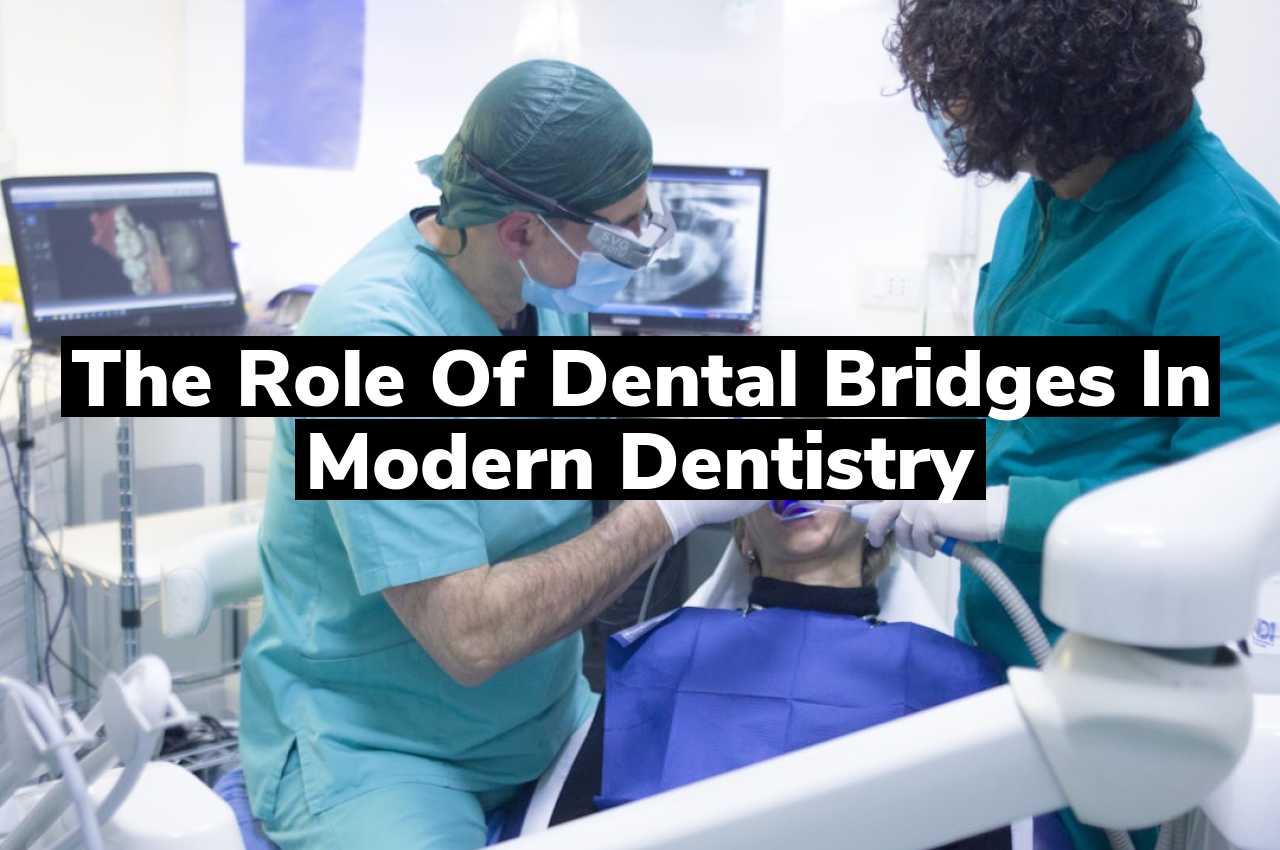Have you ever wondered about the role of dental bridges in modern dentistry? Dental bridges are used to replace missing teeth, helping to restore both function and aesthetics to a patient’s smile. They play a crucial part in dental restoration by ensuring that the remaining teeth stay properly aligned and the overall oral health is maintained.
Types of Dental Bridges Available
Dental bridges are a common solution in modern dentistry for replacing missing teeth. They span the gap where the teeth are missing and are anchored on either side by the natural teeth or dental implants. There are several types of dental bridges available, each designed to accommodate different dental needs and preferences. Traditional bridges involve creating a crown for the teeth on either side of the missing tooth, with a pontic in between. Cantilever bridges are used when there are adjacent teeth on only one side of the missing tooth, while Maryland bonded bridges use metal or porcelain bands to attach the artificial teeth to the adjacent natural teeth.
The choice of a dental bridge type often depends on the location of the missing tooth, the health of the adjacent teeth, and the aesthetic and functional needs of the patient. As dental technology advances, the materials and techniques used in these procedures continue to evolve, enhancing the effectiveness and durability of dental bridges. For more detailed insights into these developments, consider exploring Technological Advancements in Dental Bridge Procedures, which discusses how modern innovations influence dental bridge options and applications.
Benefits of Using Dental Bridges
Dental bridges are a significant component in modern dentistry for restoring the functionality and aesthetics of a patient’s smile. They primarily serve to replace one or more missing teeth, bridging the gap between natural teeth. The use of dental bridges helps in distributing the forces in your bite more evenly by replacing missing teeth, which is crucial for maintaining oral health. Moreover, they assist in maintaining the shape of your face and alleviate stress on your bite by preventing remaining teeth from drifting out of position.
Another key benefit of dental bridges is their ability to enhance oral functionality. With bridges, individuals can improve their speech and chewing ability, which might be compromised when teeth are missing. They also contribute to an improved smile, which can boost self-esteem and contribute positively to social interactions. For those looking to explore dental bridge options, consider visiting Top Dental Bridge Solutions in Frederick for more information.
Process of Installing Dental Bridges
The process of installing dental bridges typically involves several steps, starting with a consultation to assess the health of the teeth and gums. If a dental bridge is deemed appropriate, the adjacent teeth are prepared by reshaping them to ensure a proper fit for the bridge. Impressions of the teeth are then taken, which serve as a model from which the bridge, comprising one or more false teeth, is created. Once the custom-made bridge is ready, it is placed on the prepared teeth and adjusted to ensure comfort and functionality. The entire procedure usually requires a few visits to complete, spanning over a few weeks to allow for precise fitting and assessment.
Longevity and Care of Bridges
The lifespan of dental bridges can significantly influence a patient’s decision to opt for this type of dental restoration. Generally, with proper care, dental bridges can last many years. The longevity of these structures largely depends on the surrounding oral health and the materials used in the construction of the bridge. Regular check-ups with a dental professional are crucial to maintaining the integrity and functionality of dental bridges. For those seeking more information on general dental health, Lee Family Dentistry is available; learn more from this Frederick Dentist.
Impact on Oral Health
Dental bridges play a significant role in modern dentistry by addressing the issue of missing teeth, which can affect various aspects of oral health. When teeth are missing, it can lead to changes in bite, movement of adjacent teeth, and potential deterioration of the jawbone. By filling these gaps, dental bridges help maintain the alignment and integrity of remaining teeth and support overall oral structure. This restoration method is crucial for preserving the functionality and aesthetics of a patient’s smile, contributing positively to their oral health and well-being.
Conclusion
Explore how dental bridges are shaping modern dentistry and if you have questions, call us at 301-662-0300 or read our reviews on Google Maps.

